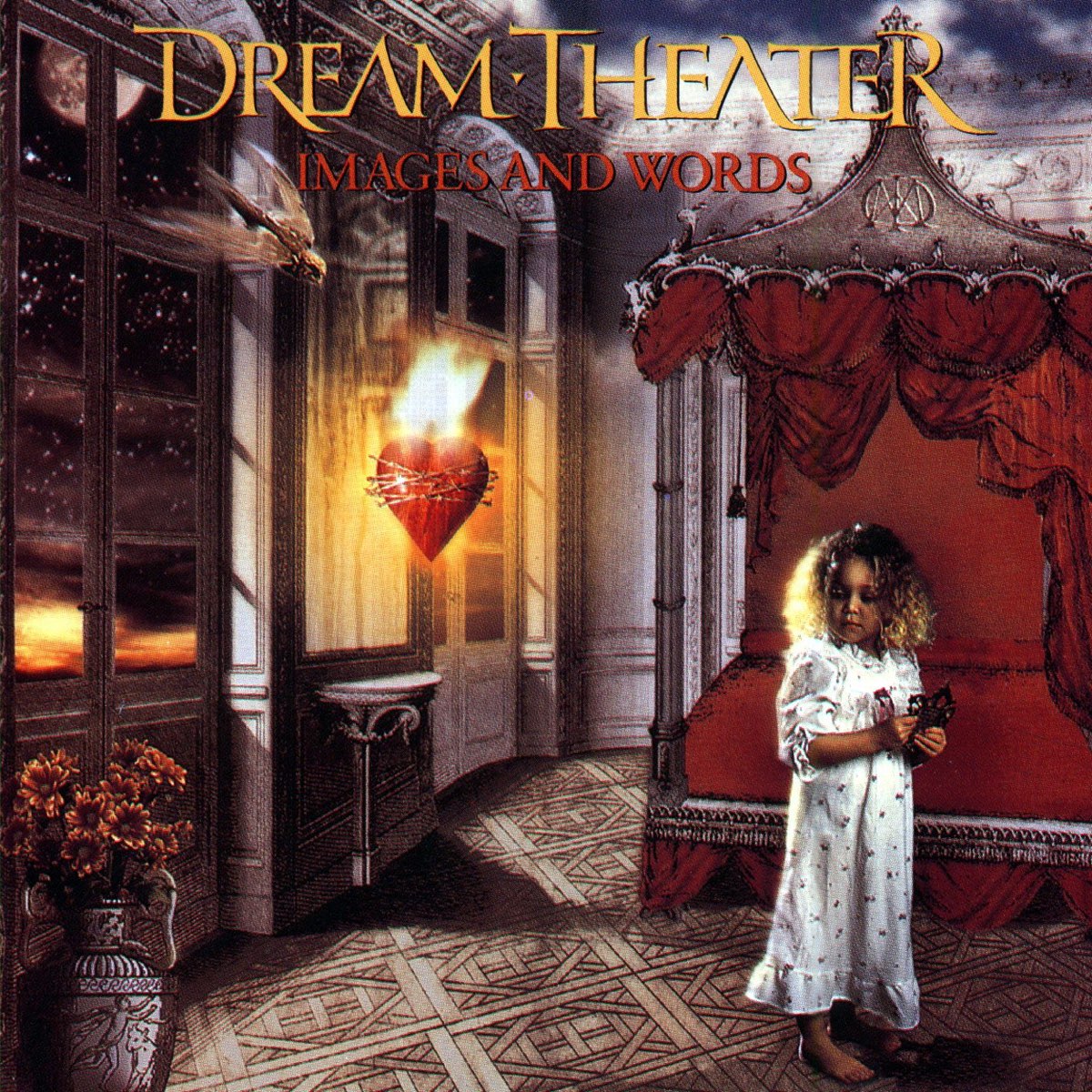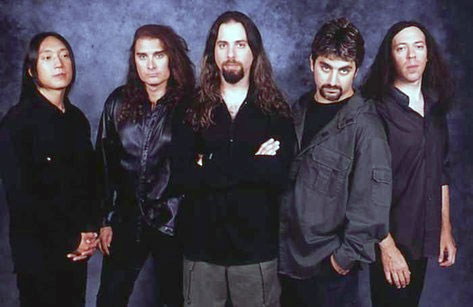Dream Theater Flaunts Technical Prowess on “Vol. 1”
Rhino reissues the first installment of the prog metal giants’ discography
Though progressive rock peaked in the 1970s, next gen prog bands continued exploring adventurous compositional directions. Dream Theater, and bands like Queensryche and Fates Warning, embraced the technicality of Yes and Rush while honing in, with a hint of technical prowess, on the harder edges of Iron Maiden and Metallica. Each Dream Theater member is a virtuoso of his craft as evidenced, for example, by drummer Mike Portnoy's double kick drum patterns and Jordan Rudess’ classically-trained keyboard flourishes. The band's struggle for artistic independence, swimming against the mainstream. deepened the connection with its passionate fanbase, landing the band at the top of musician polls and worldwide record sales of 12 million units.
Times have never seemed as celebratory and promising for Dream Theater as they have been over the past year. After a 13 year absence founding member and original drummer Mike Portnoy reclaimed his drum kit throne. A new album is on the horizon, and a 40th-anniversary world tour will soon be underway. Rhino is capitalizing on the festivities with the release of Vol. 1, a 7-LP box set focusing on Dream Theater’s recorded output released throughout the 1990s.
The Music
Images and Words

Produced by David Prater
Engineered by Doug Oberkircher and Steve Regina
Mixed by David Prater and Doug Oberkircher
Music Rating - 9
Dream Theater’s troubled relationship with Mechanic Records surrounding their 1989 debut album, When Dream and Day Unite, and issues with vocalist Charlie Dominici meant their career started on anything but a high note. The group needed a clean slate, which came in the form of the arrival of vocalist James LaBrie and signing to Atco Records in 1991. Released in the summer of 1992, Images and Words embodied what made Dream Theater’s fusion of styles distinctive and is considered one of the band’s defining efforts. The use of extended instrumental passages and conceptual lyrics cemented epics like “Metropolis Pt. 1: The Miracle and The Sleeper” and “Learning to Live” into Dream Theater’s ethos. Technical ability and heavy riffs aside, Dream Theater proved to have a rich melodic side on “Another Day,” one of the album's intentionally commercially viable tracks. It most notably featured the band's only Top 10 hit, “Pull Me Under.” The heavy rotation of the song’s music video on MTV drove Images and Words to become the group’s sole Gold album in the United States.
Awake

Produced, engineered, and mixed by John Purdell & Duane Baron
Music Rating - 9
Released two years later at the height of grunge, Awake was an attempt to emphasize the heavier aspects of Dream Theater’s sound. John Petrucci’s riff-driven approach to his guitar work and James LaBrie’s grittier vocals play into this intent, as heard on tracks like “Lie,” “Caught in a Web,” and “The Mirror.” Awake didn’t shy away from letting the group’s versatility shine through. The acoustic-driven “The Silent Man” and the U2-inspired “Lifting Shadows Off a Dream” demonstrated the group's softer, melodic side. The album’s closer, “Space Dye Vest,” would become keyboardist Kevin Moore’s swan song, as he left the band during the album’s mixing sessions.
Falling Into Infinity
-1727925795.jpg)
Produced by Kevin Shirley
Engineered and mixed by Kevin Shirley, Rich Alvy, and Barbra Lipke
Music Rating - 8
Keyboardist Derek Sherinian went from being a hired gun on the Awake tour to a full-time member when Dream Theater began preparing for a follow-up album. Interchanging personnel at the label pressured the group to write more radio-friendly material. To fuel the fire, producer Kevin Shirley made many alterations to the material provided for the album, including getting outside writer Desmond Child involved on the track “You Not Me.” Released in 1997, Falling Into Infinity represents a band chewed up and spat out by the corporate music industry. Mike Portnoy channeled his frustrations in the lyrics of “Just Let Me Breathe” and “Burning My Soul.” Despite the mounting pressure, the band found solace in the 10+ minute epics “Lines in the Sand” and “Trial of Tears.” In retrospect, Falling Into Infinity is one of the more polarizing efforts in Dream Theater’s discography.
Metropolis Pt. 2: Scenes From A Memory
.jpg)
Produced by Mike Portnoy and John Petrucci
Engineered by Doug Oberkircher, Brian Quackenbush, and Michael Bates
Mixed by Kevin Shirley, Rory Romano, David Botrill and Shinobu Mitsuoka
Music Rating - 10
With no interference from the label, outside producers, or stressors to write a hit, Dream Theater sought to reclaim its independence. The writing was on the wall for Derek Sherinian, who ultimately was fired from the group. Jordan Rudess, who collaborated with Petrucci and Portnoy on the Liquid Tension Experiment side project, was brought into the fold, thus rounding off the classic lineup. Utilizing the Falling Into Infinity leftover “Metropolis Pt. 2” as a starting point, the 20-minute demo fleshed out into a 77-minute concept album. It tells the story of the protagonist realizing he is the reincarnation of an older woman who died under mysterious circumstances. Portnoy once described Scenes from a Memory as “the resurrection of Dream Theater.” Between the strength of the concept and the right amount of light and shade in musicality, the band truly fires on all cylinders. In other ways, Scenes From A Memory encompasses all the grandiose pomp and circumstance progressive rock is known for. The masses resonated when readers of Rolling Stone voted the album No. 1 in a favorite prog rock albums poll.
Presentation
Vol. 1 comes packaged in a hardbound slipcase with artwork designed by long-time collaborator Hugh Syme. The front illustration works in themes and elements derived from the covers of the albums featured in the set: the girl in the gown (Images and Words), the mirror (Awake), the binocular men (Falling Into Infinity), and the face in the mirror (Scenes from a Memory). Except for original European, Brazilian, and South Korean pressings of Images and Words, the rest of the albums never received vinyl treatment upon their initial release. The core basis of each album’s packaging stems from the reissues put out by the Netherlands-based Music On Vinyl label in the mid-2010s. Rhino sought to perfect what came before by doing away with single-pocket jackets for the double albums and re-formatting the lyric inserts into gatefolds. However, the center labels are a puzzle. Images and Words and Awake have the custom labels used on the pressings released in the US by Enjoy The Ride Records in the mid-2010s, while Falling Into Infinity and Scenes from a Memory use the labels from the MOV pressings. Each record, housed in polylined sleeves, comes across as more standard weight than the sturdy MOV pressings and don’t have any quality control flaws.
The Sound
Instead of fresh remasterings for this box set, Rhino recycled the metal parts from the Music On Vinyl pressings, presumably sourced digitally.
Images and Words
Produced by David Prater
Engineered by Doug Oberkircher and Steve Regina
Mixed by David Prater and Doug Oberkircher
Sound Rating - 7
With a running length of 57 minutes, I knew what to expect from this 1 LP pressing before it made its way on the turntable. Not before long, I was reaching for the volume knob to get a respectable output since the cut is at a quieter level to allow all the crammed grooves to fit. It’s a shame because Images and Words’ production value is so polished, and it loses the magic with killed dynamics and the intricate arrangements coming across as more compressed. The 1 LP approach gets points for authenticity since the original pressings came in this format. It would’ve been more appealing if Rhino had used the metal parts from Enjoy The Ride Records’ 2 LP cut of this album from 2013, which I’d imagine is more of a juggernaut compared to this.
Awake
Produced, engineered, and mixed by John Purdell & Duane Baron
Sound Rating - 9
Mike Portnoy’s opening drum fill on “6:00” glides across the speakers in a lively way. Once the whole band comes in, the soundstage is in-depth and full-bodied. The spoken word samples interspersed on several of the album’s tracks come from the far ends of the speakers, emphasizing the soundstage’s vastness and adding to the album’s cinematic approach. Outside of the generalized metal classification, Awake has an orchestral approach in the mix where you can hear the layers of the overdubs singled out. John Petrucci’s helicopter guitar effect and dynamic arrangement of “Voices” make the track one of the album’s sonic highlights.
Falling Into Infinity
Produced by Kevin Shirley
Engineered and mixed by Kevin Shirley, Rich Alvy, and Barbra Lipke
Rating - 8
In terms of production, Falling Into Infinity is a more natural-sounding Dream Theater album, free of the of-the-time triggered drum sounds and pre-sets heard on the previous two albums. All segments of the equalization spectrum shine at different points on the album, whether it's the Middle Eastern sizzle on “New Millennium” or the rich bottom end of “Burning My Soul,” the latter being a rhythm section showdown with Portnoy’s double-kick drum work cutting in the mix so precisely. John Myung’s bass sounds the strongest on mellow tracks like “Hollow Years” and “Take Away My Pain.” The mids are sometimes overly emphasized, and the busier parts of the mix sometimes sound congested. After familiarizing myself with the original CD, analytical diehards can note that this pressing utilizes an alternate album master without in-between segues and occasionally count-ins.
Metropolis Pt. 2: Scenes From A Memory
Produced by Mike Portnoy and John Petrucci
Engineered by Doug Oberkircher, Brian Quackenbush, and Michael Bates
Mixed by Kevin Shirley, Rory Romano, David Botrill and Shinobu Mitsuoka
Sound Rating - 10
At this point, after working with outside producers for the better part of their career, Mike Portnoy and John Petrucci would single-handedly craft this, one of the greatest-sounding Dream Theater albums. Scenes From A Memory hits all the sweet, never overbearing spots between moments of dry intimacy and bombast. It almost sounds three-dimensional, with each mix component presented with crystalline clarity and no buried elements. This is a richly arranged album packed with contrasting heavy/ hard and soft moments, each able to stand on its own, yet never interfering with the album's dynamic flow. Dream Theater saved its best for last. is for last.
Conclusion
Dream Theater’s catalog is not the easiest to track on vinyl. The Vol. 1 box set is vindication for the fans who don’t want to go through the extremes of obtaining these costly out-of-print albums in the secondary market. Between Portnoy’s return and the 40th-anniversary festivities the timing here couldn't have been better; I’m hoping the momentum continues in the not too distant future with more from Dream Theater extensive catalog.












































